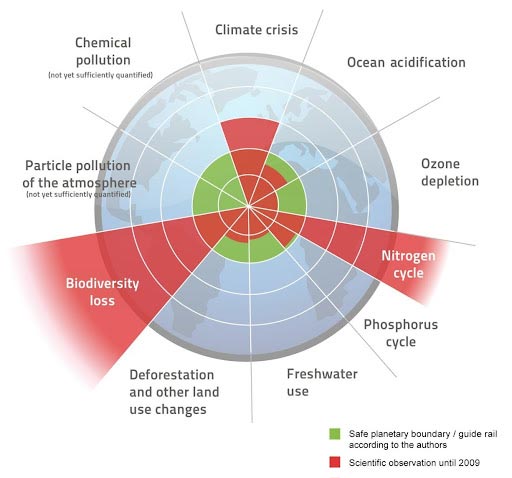In 2017, the population of 49 of America’s 50 states (all but Alaska) – 324 million strong – sprawled across an area of 179,807 square miles (115.1 million acres) of developed land, according to the NRCS and its NRI. Much of this developed land was not occupied by residential areas per se, but by the widespread artificial structures, facilities, and infrastructure needed to support modern, high-consumption human settlements. The average land consumption per person (per capita) in 2017 in the United States was 0.356 acre. That is, on average, each American resident accounted for more than a third of an acre of developed land. This area, which is about 15,050 square feet, is much larger (5 or 10 times) than the size (square footage) of a typical American dwelling (private single family home).
For every three residents in America then, on average, slightly more than one acre of land has been converted from open space – both natural habitat and agricultural land – to asphalt and concrete, a wide variety of manmade structures, and artificial landscaping.
As noted in Section 1.4, this 0.356-acre/resident metric does not include relatively unpopulated rural lands – farmlands (cropland, pasture, and rangeland), forests, reservoirs, mines – that furnish crucial raw materials and products used by every resident, namely food, fiber, fuels, water, energy, metals, and minerals. Nor does it include the bioproductive (photosynthesizing) forestlands needed to absorb or assimilate each resident’s carbon dioxide (CO2) emissions from fossil fuel combustion to produce electricity and propel our vehicles.
All of these ecologically productive lands not covered with pavement and buildings, but used directly and indirectly by each and every state resident (and all human consumers), contribute to the ecological footprint (EF) of each Coloradan and American. This entails a much larger amount of land than that delineated by the NRI as developed land, approximately 60 times as much in fact, or 20 global acres per American resident.
According to the Global Footprint Network, the biocapacity in United States is 8.4 global acres per person. Thus, the U.S. has an ecological deficit of 11.6 global acres per person (Figure 10). In essence, America’s human population survives ecologically only by importing carrying capacity from other geological times (e.g., the fossil fuels) and geographic places (e.g., food imports from South America, and forestlands in Canada, Russia, and Brazil sequestering our CO2 emissions).
Globally, human civilization as a whole is also already well into overshoot of planetary carrying capacity, according to ecological footprint analysis conducted by the Global Footprint Network. As seen below, it would take the biocapacity of approximately 1.7 Planet Earths to sustainably provide for the aggregate resource consumption of some 7.8 billion human consumers on the planet.

World Ecological Footprint in 2016 by Land Type
The elimination of forest, grassland, desert, and wetland habitat from sprawl not only threatens native species, but has serious human health, safety, and economic consequences as well.
Wild habitats and ecosystems perform “ecological services.” For example, wetlands (including vegetated riparian areas alongside watercourses) are important filters that clean pollutants out of our water. Wetlands can also moderate the devastating effects of floods by acting as natural buffers and sponges, soaking up and storing floodwaters. According to the Environmental Protection Agency, nearly two-thirds of all fish we Americans consume spend some portion of their lives in wetlands, which often serve as “nurseries” for juveniles. Continuing to pave over our nation’s breadbasket and valuable habitats with unrelenting sprawl entails serious long-term economic and human health and safety costs that we simply cannot afford.
In addition, sprawl in the United States is more than a domestic environmental or quality-of-life issue. It also has global implications. The relentless and accelerating disappearance of natural habitats dominated by communities of wild plants and animals (ecosystems), replaced by biologically impoverished artificial habitats – often “monocultures” – dominated by human structures and communities, contributes cumulatively to what may become a “state shift” or “tipping point” in Earth’s biosphere. This would be an uncontrolled, sudden switch to a less desirable condition in which the biosphere’s ability to sustain us and other species would be severely compromised.
A 2012 paper in the prestigious British scientific journal Nature reviews the evidence that: “…such planetary scale critical transitions have occurred previously in the biosphere, albeit rarely, and that humans are now forcing another such transition, with the potential to transform Earth rapidly and irreversibly into a state unknown in human experience.”
Documented declines or collapses in insect, bird, and vertebrate populations in recent decades as a result of the ever-increasing human appropriation of the biosphere’s habitats, spaces, energy flows, and water are a sign that human civilization may be surpassing certain “planetary boundaries.” Ten such boundaries have been identified and quantified, and we are approaching or have already exceeded four of them: climate change, nitrate pollution, phosphorus pollution, and biodiversity loss. A massive extinction of species is now underway and accelerating – the sixth in the history of life on Earth, and the first caused entirely by a single species: man.
Biodiversity scholars have predicted that the world could lose up to half or two-thirds of its species of wild flora and fauna by 2100, if not sooner. In North America, scientists estimate that the number of birds has dwindled by approximately 30 percent since 1970. About three billion fewer birds now grace our skies, lawns, forests, prairies, deserts, and wetlands than just half a century ago. The number of breeding birds in the United States and Canada was estimated at 10 billion in 1970. Today that number has plunged to approximately 7.1 billion.

Planetary Boundaries
Source: Rockstrom et al. (2009)